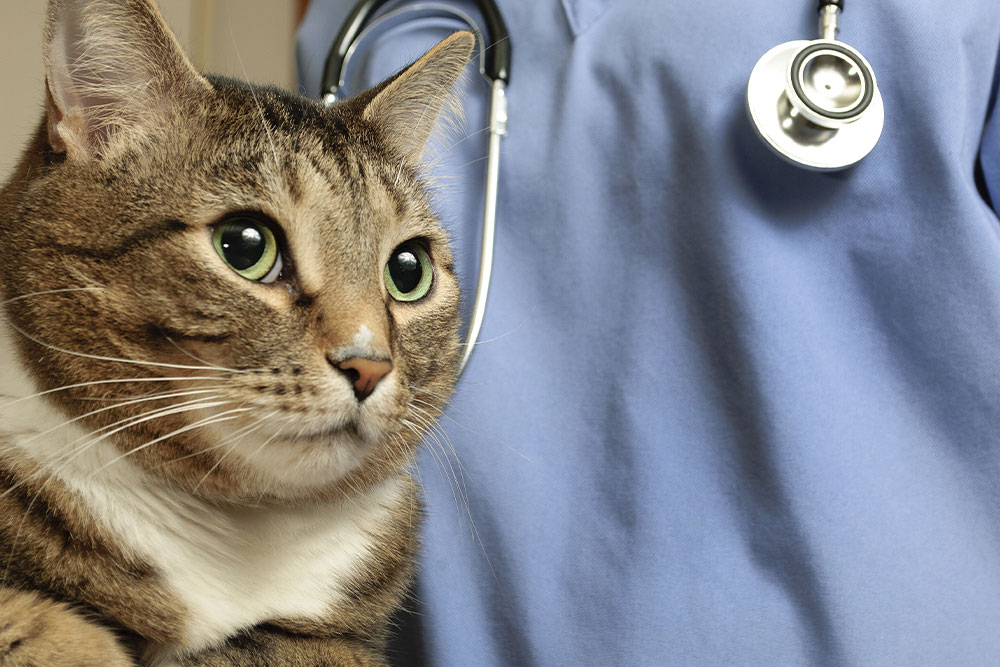Recognizing When Your Pet Eats Something Unusual
Foreign bodies are objects that pets ingest but cannot digest or pass through their digestive system naturally. These can include items such as children’s toys, socks, small household objects, or even splintered bones. Recognizing the common objects pets are attracted to can help prevent these incidents. For example, dogs are often drawn to items with human scent, like socks or undergarments, while cats may be fascinated by shiny or string-like objects.
Signs Your Pet Might Have Swallowed a Foreign Object
If your pet ingests a foreign object, the signs can vary but typically include:
- Vomiting or Gagging: This often occurs as the body attempts to expel the foreign object. Persistent vomiting can lead to dehydration, necessitating prompt attention.
- Loss of Appetite or Refusal to Eat: A sudden disinterest in food may indicate discomfort or obstruction in the digestive tract.
- Lethargy or Decreased Activity: This can signal systemic distress caused by obstruction or the onset of infection.
- Abdominal Pain: Noticeable through a tender abdomen or discomfort when touched. Your pet might adopt a hunched posture or be reluctant to move.
Importance of Prompt Veterinary Attention
Ingesting foreign objects can lead to severe health issues such as gastrointestinal obstructions, perforations, or infections. These conditions can deteriorate quickly and may become life-threatening, requiring urgent veterinary care. Without treatment, a complete blockage can cause necrosis of intestinal tissue, sepsis, and even death. Early intervention can prevent severe outcomes and improve recovery chances.
Diagnostic Process: Identifying the Problem
Clinical Examination and History
Diagnosing foreign body ingestion begins with a thorough clinical examination and detailed history of your pet’s symptoms and behaviors. Informing the vet about your pet’s access to potential foreign objects can facilitate a quicker diagnosis. A physical examination might reveal palpable masses or tenderness, guiding further diagnostic tests.
Role of Diagnostic Imaging
Diagnostic imaging is crucial for confirming the presence of a foreign body and includes:
- X-rays: Often the first step, X-rays can show many objects inside the stomach or intestines. However, some materials, such as plastic or fabric, might not appear clearly.
- Ultrasound: Useful for detecting items that do not show up on X-rays and assessing the condition of the intestinal walls, particularly fluid buildup or changes in the lining.
- Contrast Studies: Used if initial imaging is inconclusive. This involves administering a safe dye to outline the digestive tract on X-rays, highlighting blockages or slow passage.
Learn more about gastrointestinal foreign body obstruction in dogs from Cornell Vet
What Happens During Foreign Body Removal Surgery?
Pre-Surgical Preparations
Before surgery, pets typically fast for several hours. Blood tests are performed to ensure they are fit for anesthesia and surgery. These tests assess organ function and identify potential risks. An intravenous line is usually placed to administer fluids and medications.
Surgical Procedure
The process generally involves:
- Anesthesia: Administered to ensure your pet is unconscious and pain-free during the procedure. An anesthesiologist or trained veterinary technician monitors vital signs throughout the surgery.
- Incision: The veterinarian makes an incision in the abdomen to access the gastrointestinal tract, with the location depending on where the foreign object is suspected.
- Exploration and Removal: The vet examines the intestinal tract to locate and remove the foreign object. Multiple incisions in the intestines may be necessary.
- Closure: The incision is sutured closed layer by layer, maintaining the integrity of the abdominal wall to prevent complications like hernias.
Post-Operative Care
After surgery, recovery focuses on:
- Monitoring for Complications: Such as infection at the incision site or signs of internal bleeding.
- Pain Management: Providing appropriate analgesics to keep your pet comfortable.
- Gradual Reintroduction of Food: Starting with a bland diet before transitioning to regular food.
- Restricting Activity: To allow healing without stress on the incision site.
Read more about gastrointestinal foreign bodies in small animals from ACVS
Recovery and Home Care Tips
What to Expect After Surgery
Monitor your pet for signs of pain or infection at the incision site, such as redness, swelling, or discharge. Your veterinarian will provide guidelines on gradually reintroducing food and managing pain relief medication. Watch for behavior changes, like increased lethargy or appetite, which could indicate complications.
Long-Term Health Management
To prevent future incidents, consider:
- Monitoring What Your Pet Has Access To: Keep potential hazards out of reach, particularly in areas where your pet spends most of their time.
- Providing Appropriate Toys: Choose larger, durable toys that cannot be easily swallowed.
- Regular Veterinary Check-Ups: These visits can help catch potential health issues early and ensure your pet’s vaccinations are up to date.
Contact North Waterloo Veterinary Hospital for more information
Preventing Foreign Body Ingestion in Pets
Strategies to Keep Your Pets Safe
Educating yourself on potential hazards in your home and making appropriate adjustments can significantly reduce the risk of your pet ingesting foreign objects. Tips include:
- Choosing Durable and Appropriately Sized Toys: Toys should not easily break into small pieces.
- Keeping Small Objects, Like Socks and Children’s Toys, Out of Reach: Store these items in closed bins or on high shelves.
Importance of Supervision and Pet-Proofing
Creating a safe environment involves:
- Supervising Your Pet During Play: Especially when introducing new toys or in environments with small objects.
- Securing or Removing Risky Items: Pay special attention to trash cans, laundry baskets, and any space where your pet might explore unsupervised.
Steps to Take if You Suspect Your Pet Has Swallowed Something Dangerous
If you suspect your pet has swallowed a foreign object, avoid inducing vomiting as it can cause additional harm. Instead, observe your pet closely and contact a veterinarian immediately if you notice distress or any of the symptoms mentioned earlier. Quick action can prevent serious complications and improve the prognosis.
Worried about your pet? Schedule your appointment here








Leave A Comment